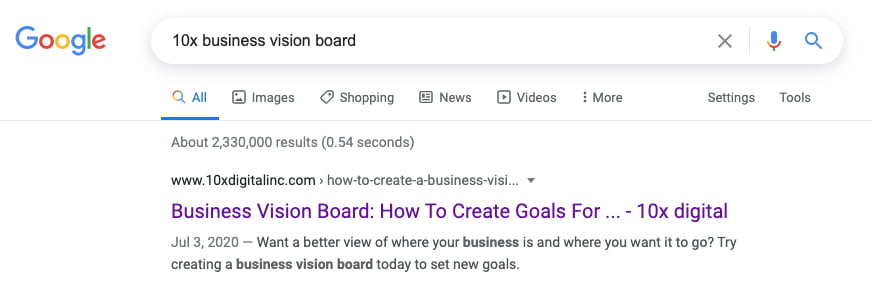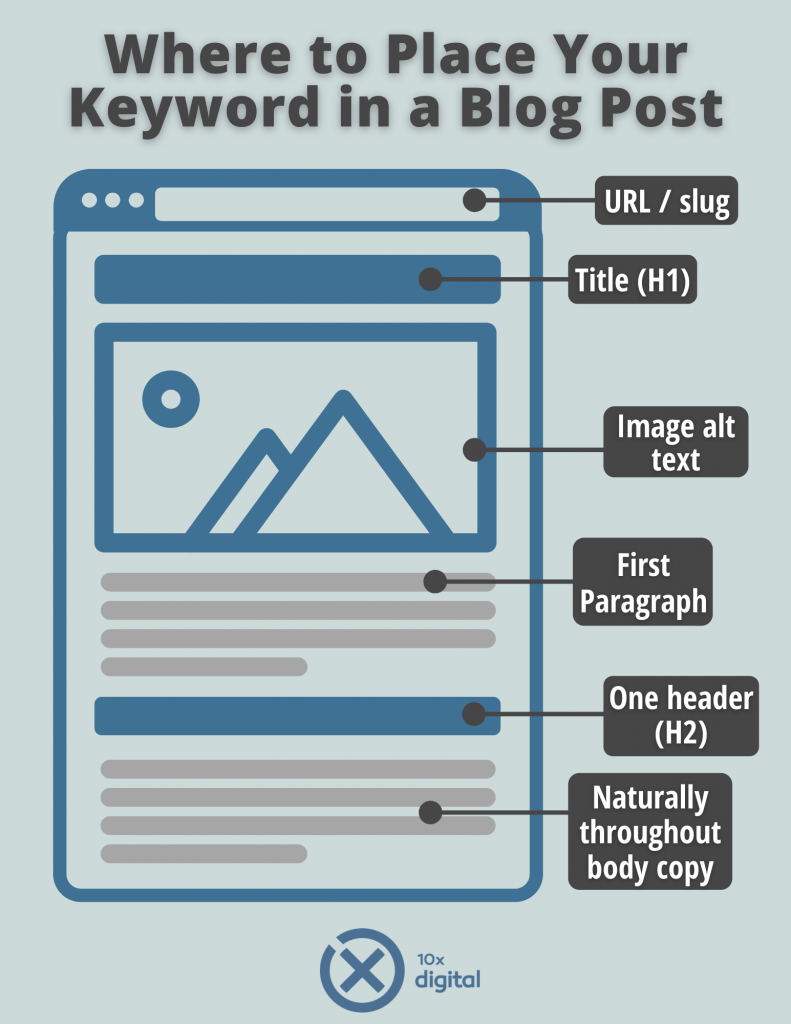Are you focused on keyword placement in articles? While it may seem like a small detail, it can yield a significant impact when it comes to search engine optimization (SEO). Sure, you already know your business: you’ve locked in your message, target audience and how you can solve their needs through a specific product or service. But to create digital environments that connect end-users to your content, you need an effective keyword strategy. And that strategy needs to be specific and targeted, down the exact placement in your blog post.
Keywords are the terms that help us identify what our audience wants, and in turn, leverage our knowledge to directly target articles, blog posts and digital ads to them. To build a demand generation strategy around effective content and SEO, you need to understand the value of keyword placement in the articles you write. To cover the basics, we’ve outlined six of the most effective areas for keyword placement and a few examples of how to execute in application.
1. Title (H1)
It’s always easiest to start at the beginning. If your keywords directly correlate to an article’s main idea, as opposed to an individual section, place it directly into the title or H1. An example of this could look like the following.
- Keyword: safest ride-share
- Example: Top 10 Safest Ride-Share Options in 2020
2. First Paragraph
Most Google searches aren’t one or two words; users typically search a string or series of words together to help find a specific resource. In fact, research shows that long-tail, or multi-world, keyword searches have a click-through rate of 5 percent higher than generic searches.
Whatever your series of keywords may be, try to include them near the introduction of your article. If a user searched a specific term and clicks on your article, you want to show value early (and confirm to the reader they’re in the right spot). Place the content in the first paragraph, weaving it into either the first or last sentence.
- Keyword: hiring a financial consultant
- Example: As a leader in your organization, consider hiring a financial consultant to provide additional support to your accounting team.
3. Headlines (H2)
Dividing content into sections with engaging headlines not only helps your audience digest and retain your content but creates opportunities for highly-visible keyword placement. Aim to include your keyword in at least one H2. If you’re struggling to find the right spot, the conclusion header is always a great option. You can more or less affirmatively restate the title of the article. Take a look at this article for an example!
- Keyword: keyword placement in articles
- H2 (conclusion header): Optimize Your Keyword Placement in Articles
4. Slug/URL
Some websites, like Facebook, often do not shorten or reformat URLs for better visibility. In this case, a user might see a string of numbers and letters in the link you’ve provided. When you place keywords into the slug, you increase searchability and directly communicate to the reader what they’re about to click.
- Keyword: business vision board
- URL: https://www.10xdigitalinc.com/how-to-create-a-business-vision-board/
Keywords should also be included in your landing page’s meta descriptions, ensuring that search engines pair your content with their inquiry when a user enters a specific term. See the example SERP below.

5. Alt Text for Images
To support better web accessibility, marketing professionals add alternative text to images. When an image doesn’t load or a user cannot see the screen, text display can communicate the visuals in its absence. When you place keywords into the alt text, you also provide better context to search engines to index the image properly.
6. Body Copy
Keywords should be staggered throughout the body copy of your content, embedding it into questions, statistics or new ideas. As you write, be aware of keyword density, or how often your keywords appear in your article against the total number of words.
Overuse can hurt your keyword strategy—keyword “stuffing” can penalize your content and remove your page from the Search Engine Results Pages (SERP). Experts agree that an ideal keyword density is around 1 to 2 percent, meaning that your keywords can appear about one to two times per 100 words.
Optimize Your Keyword Placement in Articles
While these practices may seem like small adjustments, a keyword strategy rooted in placement will help you to connect your potential audience to relevant content using the power of search engines. Over time, remember to continue refining your content, adding more relevant and updated keywords to reach new users.
We’ve created a PDF cheat sheet that outlines these six best keyword placements for your articles.
Click and download the PDF to keep handy while you create your blog content!


